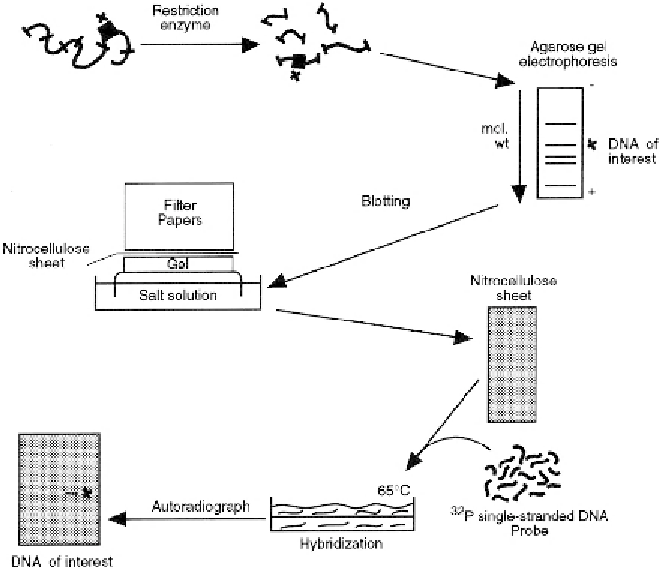Biology Reference
In-Depth Information
membrane is then overlain with dry filter paper. Additional layers of dry fil-
ter paper or absorbent papers are stacked on top. Buffer passes out of the gel,
drawn by capillary action into the dry filter papers. As the buffer moves from
the gel, it elutes some of the denatured DNA from the gel. When the single-
stranded DNA comes in contact with the nitrocellulose lying on top of the gel,
it binds to the membrane. The blotting process is carried out over several hours,
and results in the transfer of part of the DNA from the gel onto the nitrocel-
lulose membrane. It results in an (at this point) invisible pattern of bands on
the membrane surface that resembles the original bands in the gel, with a
minimal loss of resolution. The stack of filter papers is then removed and the
Figure 5.6
Outline of a Southern blot procedure. DNA is cut with restriction enzymes, electro-
phoresed, and blotted onto nitrocellulose by capillary action. The nitrocellulose sheet containing
the DNA is baked to bind the DNA to the nitrocellulose. Specific DNA is identified by the bind-
ing of a labeled probe (here it is
32
P-labeled single-stranded DNA) in a hybridization procedure.
Excess probe is washed off, and the nitrocellulose sheet is then exposed to X-ray film to visualize
the location of the DNA that contains sequences that are homologous to the radiolabeled probe. The
conditions (stringency) under which hybridization occurs can be varied to increase or decrease the
specificity of the reaction between DNA and probe. Southern blots allow scientists to locate specific
DNA sequences.

